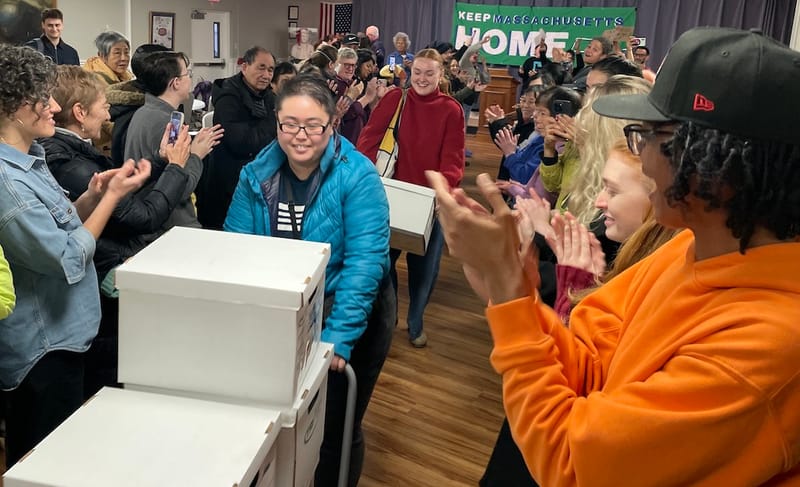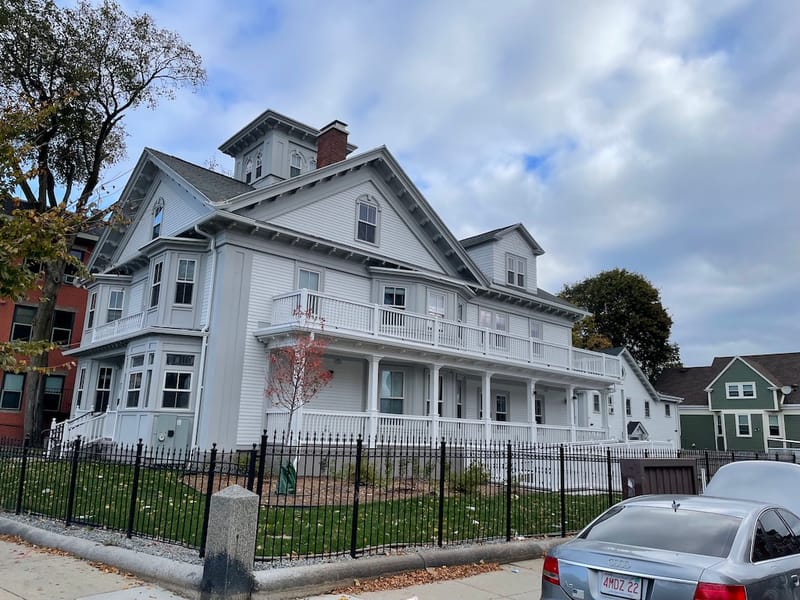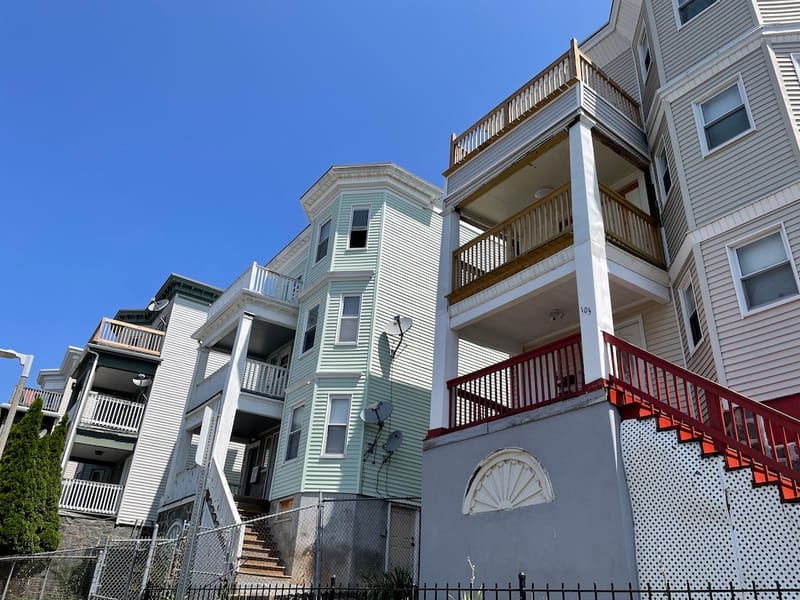Dorchester couple renting micro units for $750/month
Back in 2018, when the city launched a micro-unit pilot project, some saw the potential for sub-400 square-foot studio apartments as a solution to the city’s growing affordability crisis.
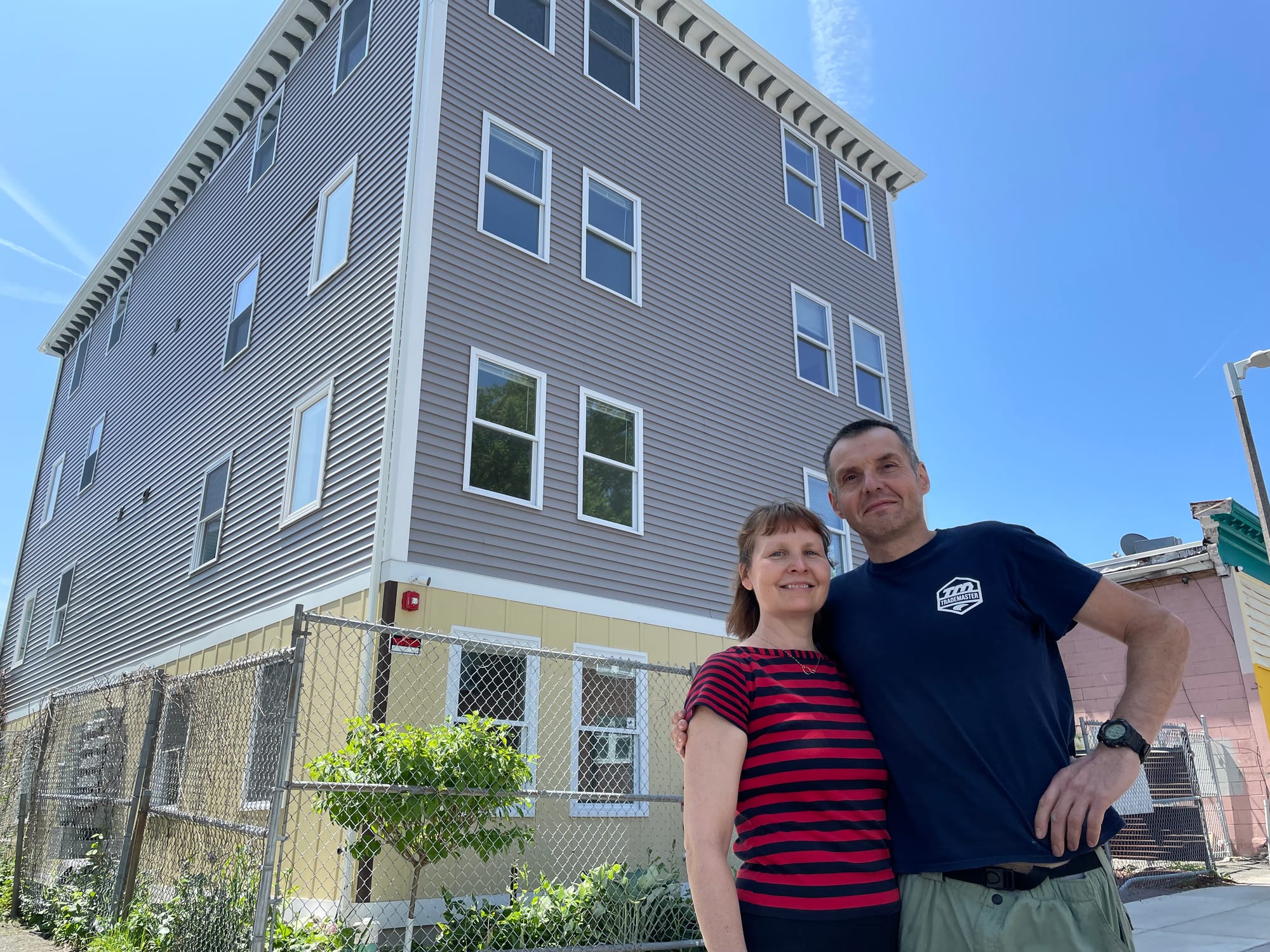
Yawu Miller
Back in 2018, when the city launched a micro-unit pilot project, some saw the potential for sub-400 square-foot studio apartments as a solution to the city’s growing affordability crisis. While the vast majority of micro units constructed over the following seven years were rented at market rate, a Dorchester couple are bringing units to market at just $750 a month.
Elisa and Vivian Girard are putting the finishing touches on a 14-unit, four-level apartment building on Westland Street near Field’s Corner. Eleven of the units will rent for $750. Two units that were set aside as “affordable” under the city’s Inclusionary Development Policy are renting at $869 — affordable to individuals earning 50% of the area median income, which this year is set at $115,800. One more unit will be rented at market rate — likely somewhere between $1,200 and $1,500, Vivian Girard says.
“We’ll keep it at market rate for a while, see what the market bears and catch up on expenses,” he said.
The couple, who co-founded the Home.Stead Café in Fields Corner with a third business partner, began construction in 2021, after selling their interest in the bakery. Relying mostly on their own labor, a loan against another property they own and using some salvaged building materials, they managed to construct the building for just $750,000, helping keep the rents down.
The units are about 280 square feet, each with its own bathroom and kitchenette. There are two accessible units on the ground floor, along with common areas: a living room, a bike storage area, a laundry room, a storage room and utility closets.
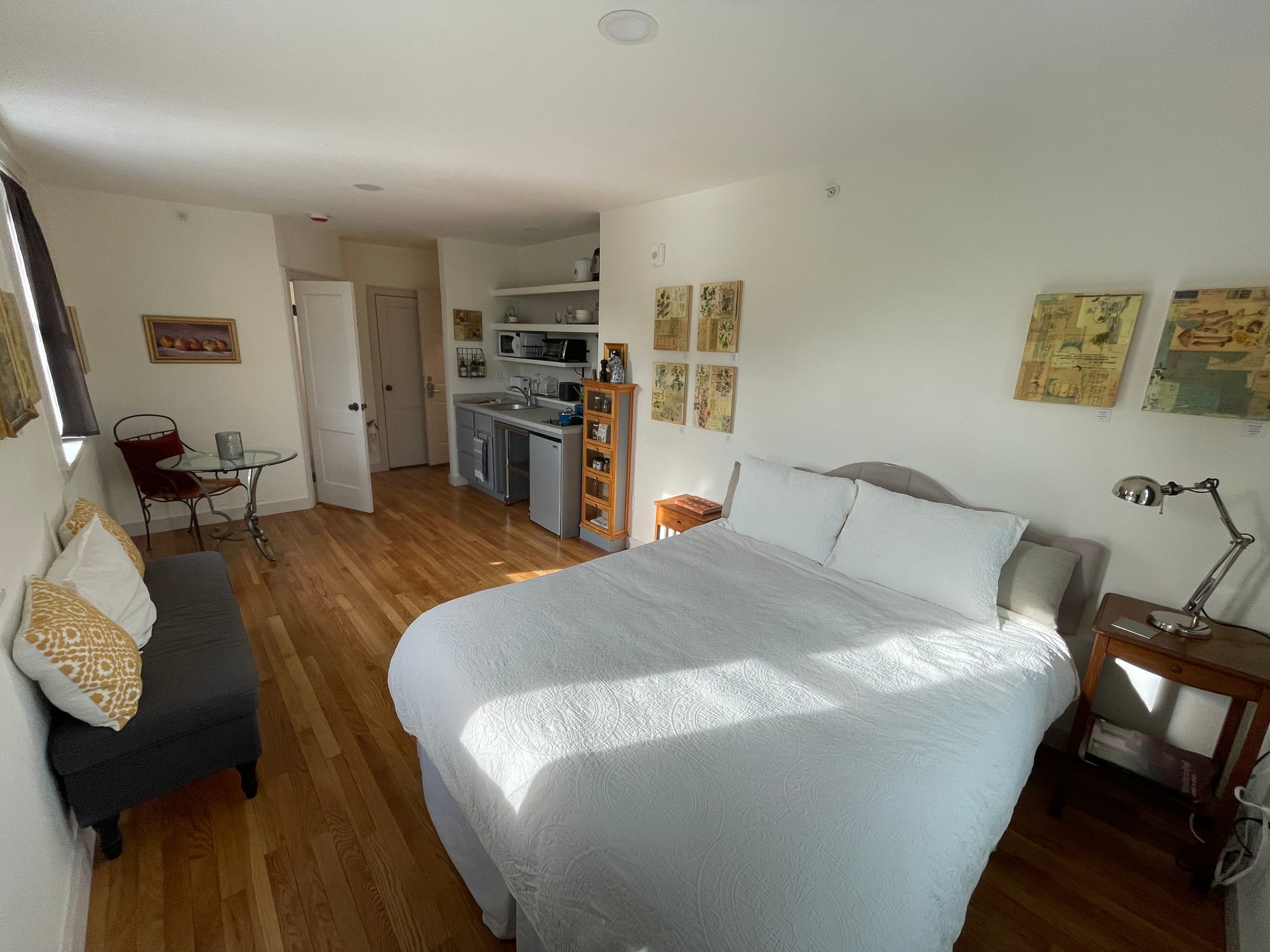
Girard said obtaining support from his neighbors was not much of a challenge, despite the fact that his building has no off-street parking.
“We got overwhelming community support, largely based on the fact that we’re building something affordable,” he said. “We also pledged that we would prioritize people without cars.”
Located near the corner of Westville Street and Geneva Avenue, the Gerards’ building is four-tenths of a mile from the Field’s Corner Red Line MBTA stop.
The Girards had already renovated two buildings in the area — the six-unit building where they currently live and a triple decker next door. For Elisa, who had only done finishing work, construction of new units was a learning experience.
“The idea of creating affordable apartments was a good challenge,” she said. “We took our time and enjoyed the process.”
Vivian said they relied heavily on salvaged materials from the Boston Building Resources Center and even used salvaged lumber from temporary structures local activist Jhana Senxian had built on a nearby vacant lot.

The Girards weren’t the only ones constructing micro units at the time. The city’s Compact Living Pilot project launched in 2018 with an eye toward finding solutions to the city’s housing shortage. While city officials hoped that allowing developers to build units smaller than 400 square feet would enable developers to build more units at lower cost, just 17 projects were approved under the program. Of those, 12 obtained permits and only 8 have been completed so far.
The eight completed projects tended toward the large side, with a total of 940 units — the majority of them in pricey downtown neighborhoods. But the higher volume did not result in lower costs. In those buildings, developers satisfied the city’s Inclusionary Development Program by setting aside an aggregate of 19% of units at affordable rents, producing a total of 184 affordable compact units, typically for individuals earning 30% to 120% of the area median income. But the market rate micro units are fetching rents as high as $3,000 a month.
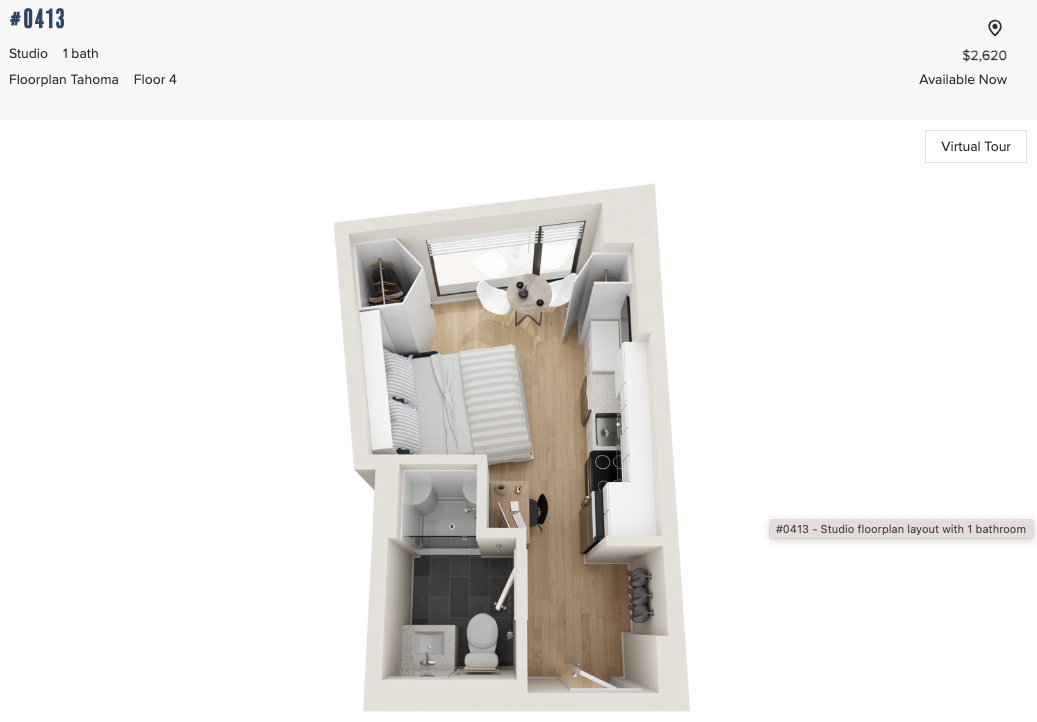
In one of the yet-to-be completed permitted projects, Dream Development is constructing a 12-unit building on Westminster Avenue in Roxbury in which half the one- to three-bedroom units will be affordable to people earning up to 80% of area median income. After pandemic-era delays and amid rising building material costs, Dream Development received subsidies from the city to keep costs down.
A team of researchers at Tufts University who studied the city’s Compact Living Project determined that high demand for the units, the desirability of amenities provided in common areas of the buildings and higher costs for compact kitchen utilities drove costs up in the micro unit developments.
“Overall, interviewees did not find that creating smaller sized units resulted in automatic cost savings for developers or renters,” the Tufts students’ report found.
But Vivian Girard says he thinks micro units could actually save developers and renters money. He estimates that without the free labor and self-financing he and his wife put into the project, he could have developed the same building for $1.5 million — a cost that would necessitate higher rents.
“If we were conventional developers, going to the bank for financing and hiring labor, we would probably charge closer to $1,500 for rent,” he said.
For now, the Girards are waiting for final inspection from the city so they can begin moving tenants in. All 14 units are spoken for.




